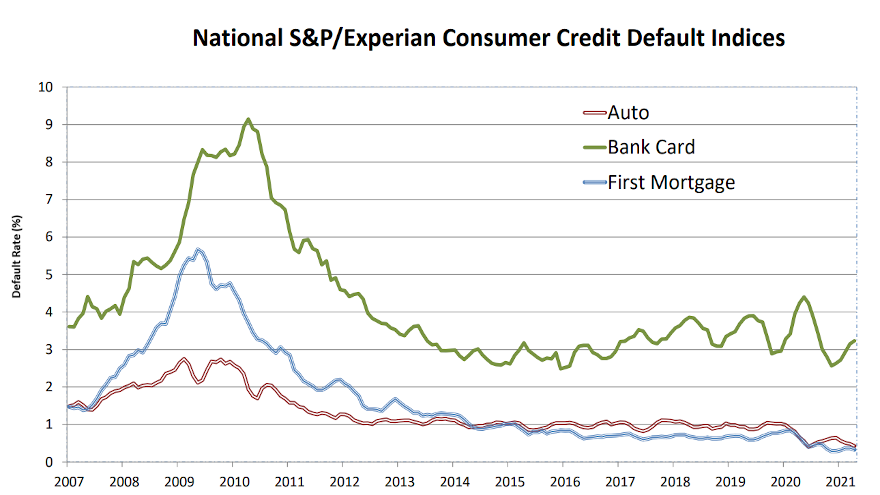Auto defaults dip again in April to near all-time low

Chart courtesy of S&P Dow Jones Indices and Experian.
By subscribing, you agree to receive communications from Auto Remarketing and our partners in accordance with our Privacy Policy. We may share your information with select partners and sponsors who may contact you about their products and services. You may unsubscribe at any time.
NEW YORK –
Perhaps the next round of coffee or drinks should be in celebration for the collections departments at auto-finance companies.
The auto portion of the S&P/Experian Consumer Credit Default Indices declined again in April and now sits just 3 basis points away from the all-time low recorded by S&P Dow Jones Indices and Experian.
According to data through April released on Tuesday, the auto default rate dropped another 5 basis points to 0.43%. It’s now 21 basis points lower than December’s reading of 0.64%.
Fueled in part by extensions, deferments and other accommodations offered by finance companies because of the pandemic, analysts noted the all-time low arrived last summer when a 16-basis-point drop from May to June created the unprecedented low reading of 0.40%.
The default rate hasn’t been above 1% since the close of 2019 with S&P and Experian pegged it at 1.02%.
Turning back to the newest data, analysts determined the composite rate — which represents a comprehensive measure of changes in consumer credit defaults — dipped 4 basis points lower to settle at 0.50%.
Subscribe to Auto Remarketing to stay informed and stay ahead.
By subscribing, you agree to receive communications from Auto Remarketing and our partners in accordance with our Privacy Policy. We may share your information with select partners and sponsors who may contact you about their products and services. You may unsubscribe at any time.
S&P and Experian mentioned the first mortgage default rate also decreased 4 basis points to 0.33%, while the bank card default rate climbed 8 basis points to 3.23%.
Turning next to the five major metropolitan statistical areas analysts track for this monthly update, they found that four produced lower rates in April compared to the previous month.
Miami generated the largest drop, falling 19 basis points to 1.04%. Chicago decreased 9 basis points to 0.50%, while Dallas softened by 8 basis points to 0.51%.
New York edged 3 basis points lower to 0.83%.
Los Angeles was the only major city that increased, ticking up two basis points to 0.52%.
Jointly developed by S&P Indices and Experian, analysts noted the S&P/Experian Consumer Credit Default Indices are published monthly with the intent to accurately track the default experience of consumer balances in four key loan categories: auto, bankcard, first mortgage lien and second mortgage lien.
The indices are calculated based on data extracted from Experian’s consumer credit database. This database is populated with individual consumer loan and payment data submitted by lenders to Experian every month.
Experian’s base of data contributors includes leading banks and mortgage companies and covers approximately $11 trillion in outstanding loans sourced from 11,500 lenders.


